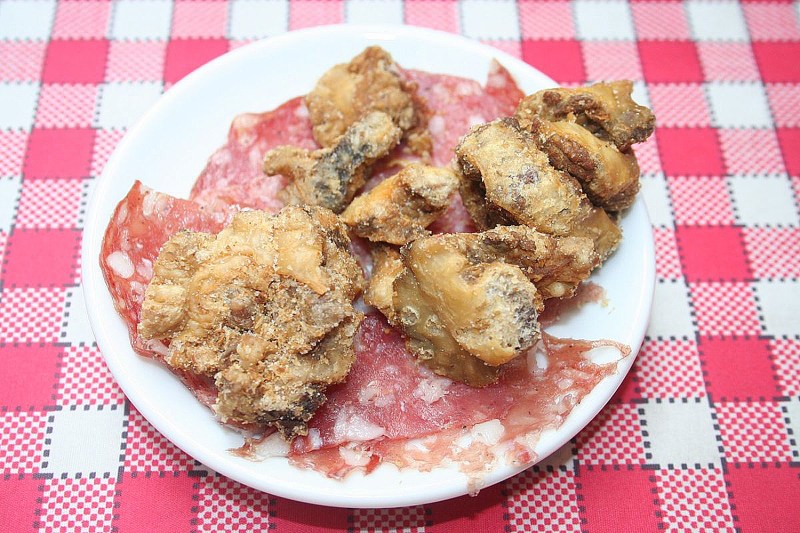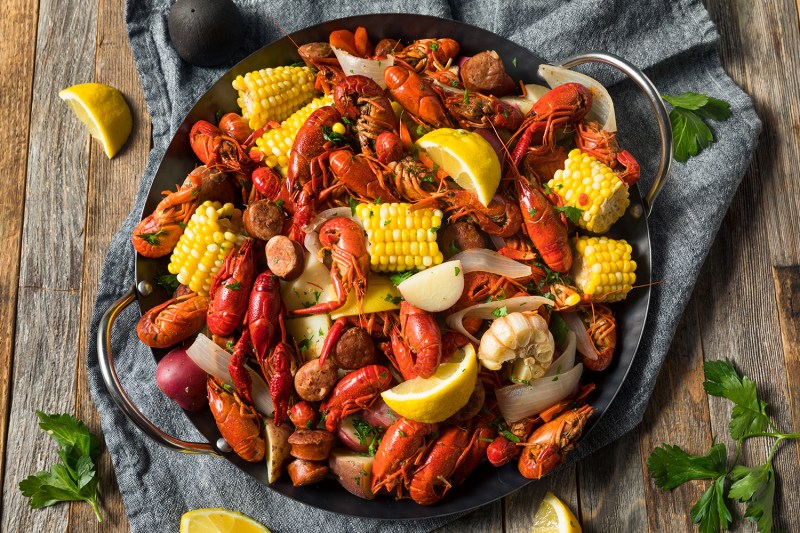
Of the many great American exports out there, Cajun food sits toward the top of the list. Equal parts French culinary wisdom and Bayou soul, it’s something of a hybrid but also very much its own cuisine. And it’s responsible for some of the most tantalizing dishes out there.
Sure, it started in New Orleans and sometimes involves crawfish. But it’s way, way more than that. We won’t dive too deep, but it pays to know something about this incredible food style, born right here in the U.S.A.
To begin, it must be said that there are distinctions between Creole and Cajun cuisine. There’s a lot of crossover, too, but generally the former was established a bit earlier, built largely around the enslaved Black community of southern Louisiana and borrowing from African and Spanish traditions, among others.
Cajun cuisine came together after New Orleans became a city and is generally the creation of the French who were booted out of Acadia by the British in the mid-1700s. Louisiana cooking is a mashup of the two, for certain, but here we will mostly dabble in the French-inspired Cajun category.
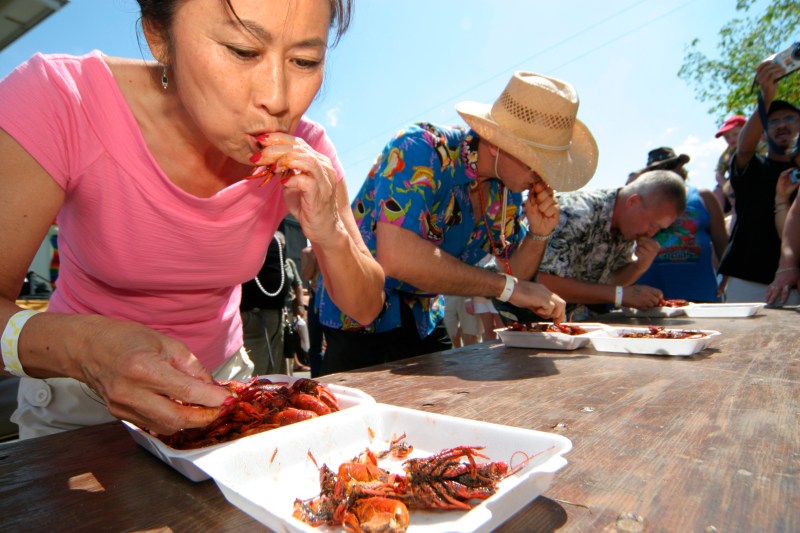
Cajun food history
Arriving in New Orleans was a bit of a shift for the Acadians. The climate was drastically different, meaning they could no longer create a lot of the dishes they were accustomed to. So, a kind of fusion was born between some classic Old World cookery and more of the rustic and seafood-heavy dishes of the Gulf Coast.
Due to its location, the Big Easy and Cajun cooking grew to incorporate freshwater and saltwater protein like catfish, redfish, crawfish, and shrimp, along with other staples like turkey, duck, pork, and even alligator. The holy trinity of Cajun cuisine borrows from French gastronomy as is built around the trifecta of bell pepper, onion, and celery.
Historically, the cooking genre has often revolved around braising, boiling, smothering, grilling, and stewing. Major ingredients and items continue to be cornbread, scallions, pecans, okra, sweet potatoes, cayenne peppers, collard greens, and more. Sure, there are the festive and spectator-friendly crawfish boils and cajun food seasoning is becoming more widely available. But there’s also head cheese, dirty rice, boudin balls, tarte à la bouillie, and pecan pralines.
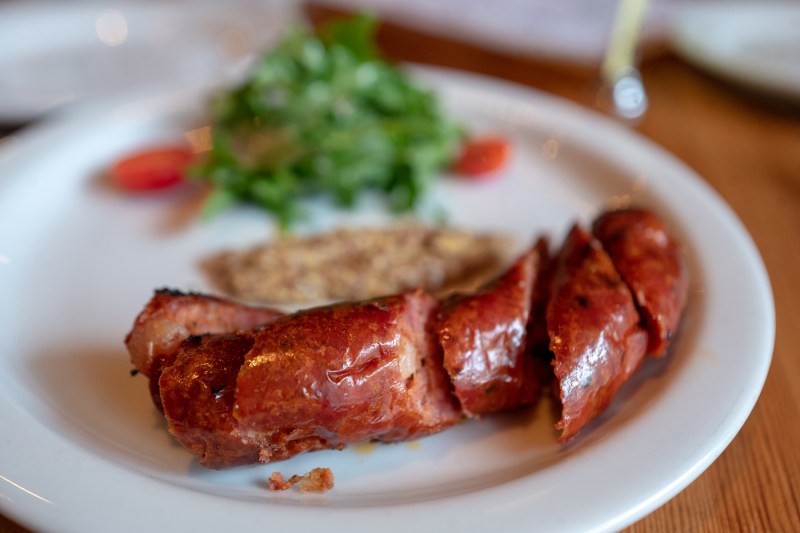
Signature Cajun dishes
Andouille
A spicy pork sausage of French origin, andouille in Cajun tradition involves garlic, pepper, onions, and wine. It’s double-smoked and, in more rural areas especially, it’s made like it was in its homeland, by seasoning, hanging, and smoking pig intestines.
Gratons
Sometimes called scratchings, gratons are the solid snacky bits left over after rendering meat like pork, chicken, or goose. They’re often salted and eaten as an appetizer in Louisiana.
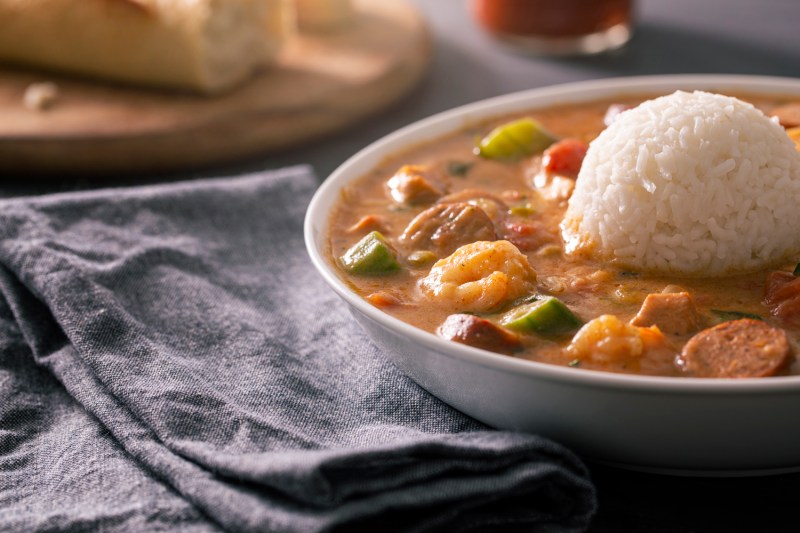
Gumbo
A true Cajun star, gumbo is the official state cuisine of Louisiana. It’s usually made with a dark gravy or roux, along with shellfish or game. It’s very common to also throw some sausage or ham and the whole thing melds delightfully thanks to several hours of simmering during preparation.
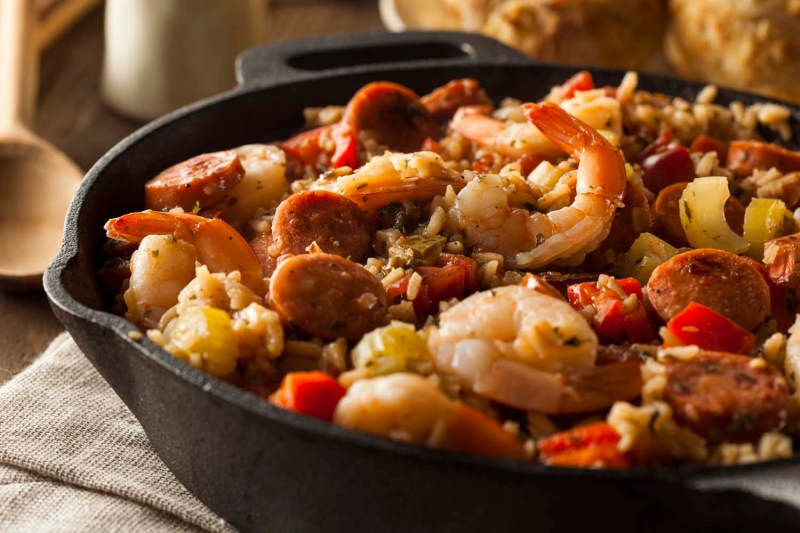
Jambalaya
Like more than a few Cajun dishes, the rules for jambalaya aren’t very strict. A stew of rice and shrimp, it tends to incorporate chicken and crawfish, sometimes beef. The meats join up with bell peppers, tomatoes, onion, celery, and chili peppers.
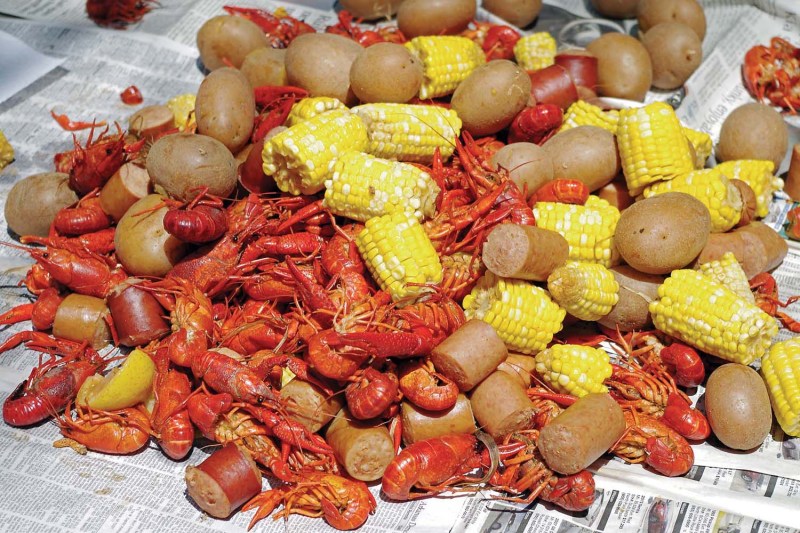
Boiled crawfish
A southern staple, especially in the Bayou, boiled crawfish is like the party-ready, more accessible version of lobster. It takes a bit of skill to eat and is often hit with spices like paprika, garlic, and oregano, along with several different hot sauces.
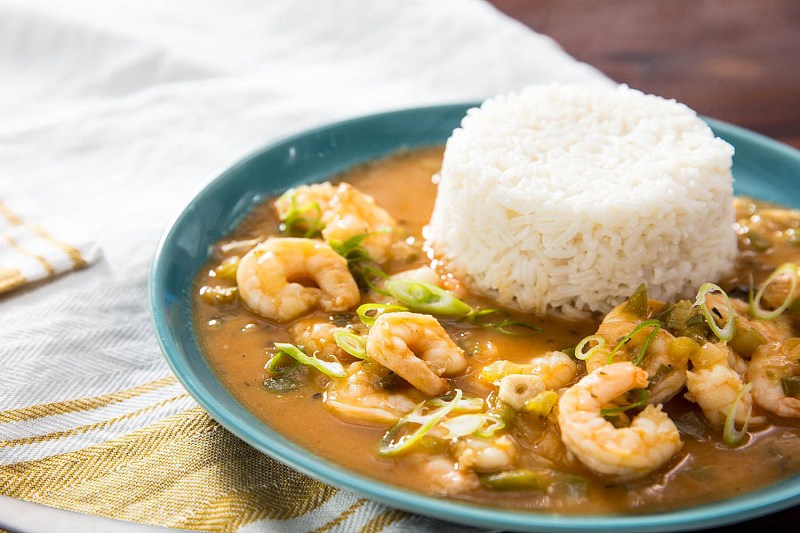
Étouffée
This dish involves a brothy mix of shellfish served atop or beside a bed of rice. The sauce is made via smothering, a kind of stovetop braising. In this case, the sauce is built around roux (animal fat and flour), and a crawfish version remains vastly popular.
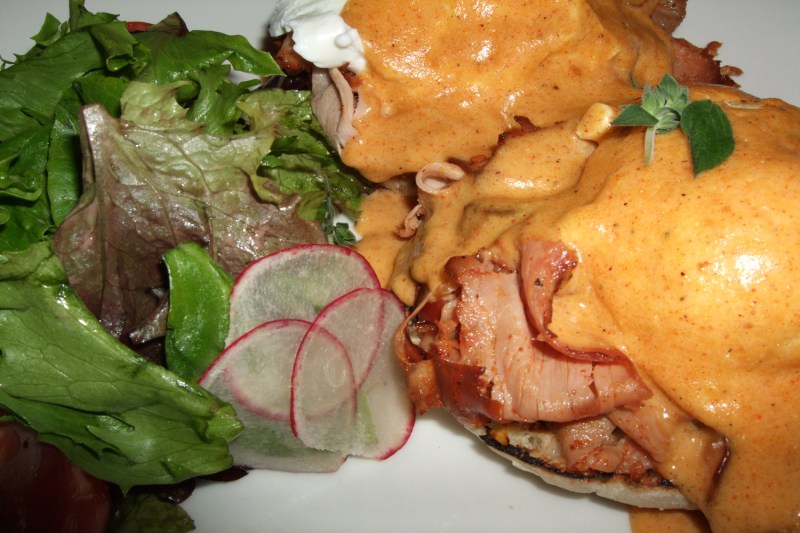
Tasso ham
A fatty and heavily seasoned dish, tasso involves pork shoulder hit with salt, cured, then often treated with cayenne pepper and garlic. It’s served with vegetables or cut up and thrown into other dishes such as jambalaya.
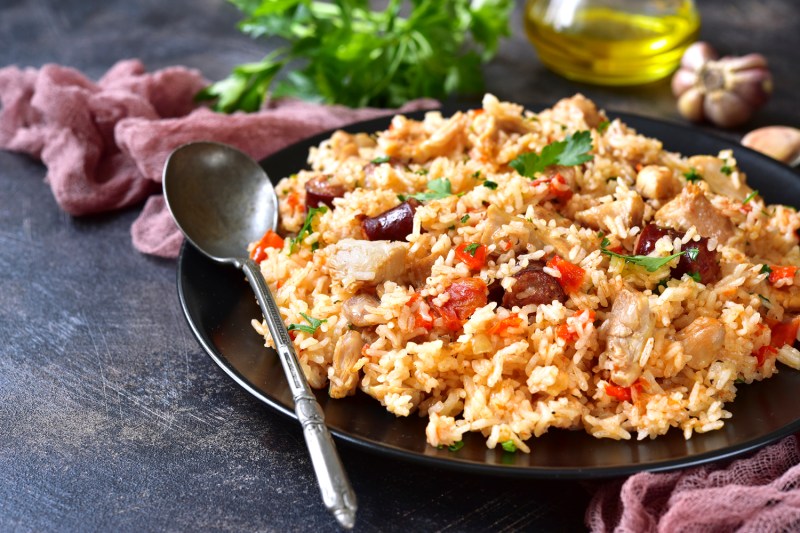
Classic Cajun recipes
Jambalaya
Emeril Lagasse knows a few things about Cajun cooking. He even earned a regional James Beard Award while working in Cajun cooking. Here’s his jambalaya recipe, a go-to that reheats wonderfully, so make extra.
Prep Time: 30 minuntes
Total Time: 90 minutes
Yield: 6 servings
Ingredients
- 24 medium peeled, deveined shrimp, about 1/2 pound, chopped
- 1/2 pound boneless, skinless chicken thighs, diced
- 1 tablespoon Emeril’s Original Essence
- 1/4 cup olive oil
- 1/2 cup chopped onions
- 1/2 cup chopped green bell peppers
- 1/2 cup chopped celery
- 1/2 teaspoon salt
- 1/4 teaspoon freshly ground black pepper
- 2 tablespoons chopped garlic
- 1/2 cup chopped tomatoes
- 3 bay leaves
- 2 teaspoons Worcestershire sauce
- 2 teaspoons hot sauce
- 1 1/2 cups long-grain rice
- 3 1/2 cups chicken stock
- 1/2 pound Andouille sausage, sliced
- chopped green onion for garnish
Method
- Combine the shrimp, chicken, and Essence in a bowl and toss to coat evenly. Set aside.
- Heat the oil in a large, heavy stockpot over medium heat. Add the onions, peppers and celery, salt and pepper, and cook, stirring for 10 minutes, until softened. Add the garlic, tomatoes, bay leaves, Worcestershire, and hot sauces. Stir in the rice and slowly add the broth.
- Bring the rice to a simmer, cover, reduce heat to low, and cook until most of the liquid is absorbed and the rice is tender, about 15 minutes.
- Stir in the shrimp and chicken mixture, and the sausage. Cover and cook for 10 minutes longer.
- Turn off the heat and allow the jambalaya to continue to steam 10 minutes longer before serving. Stir in the green onion.
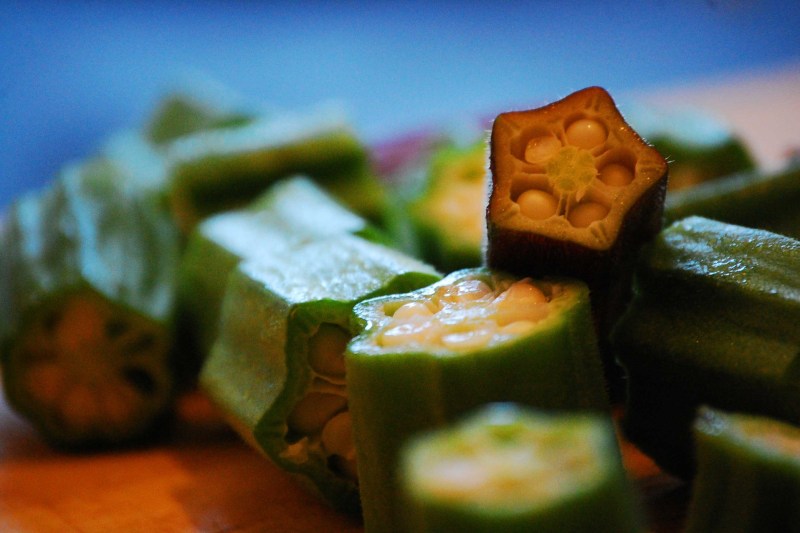
Cajun-style okra
Okra is one of the classic ingredients in Cajun cuisine. It’s native to Ethiopia, and it was brought to North America by settlers centuries ago. It’s a common ingredient in soups and stews, and its unique flavor has been compared to eggplant or green beans.
Prep Time: 10 minutes
Total Time: 45 minutes
Yield: 4 servings
Ingredients
- 2 cups okra
- 1/2 cups oil for frying
- 4 tablespoons olive oil
- 3 tomatoes, blanched and peeled
- 1 onion, diced
- 2 cloves garlic, minced
- 1 tablespoon Cajun spice, ground
Method
- Clean okra and halve lengthwise.
- Heat oil in a pan deep enough for frying. Fry okra for 3-4 minutes, then place on a paper towel to absorb any excess oil.
- Chop tomatoes into large pieces.
- Heat olive oil in another pot on low. Sauté onion and garlic until translucent.
- Add spices and tomatoes, then continue cooking on low heat for around 30 minutes, stirring occasionally.
- Add salt and pepper and stir. Pour sauce into a deep plate and lay okra on top.

Cajun seasoning recipe
Emeril’s Essence
(From Food Network)
Cajun food is many things, but if you don’t get the seasoning just right, it’s not Cajun food. There are plenty of commercial spice blends on the market to give your food that Cajun kick, but why not try making your own? You probably have all the ingredients at home, and unlike most commercial spice blends, there won’t be any preservatives. In Emeril Lagasse’s jambalaya recipe earlier in this article, one of the ingredients was Emeril’s Original Essence. Thankfully, you don’t have to search your local grocery store to find this blend of spices; here’s a version that you can make at home. And this blend will work well in most Cajun dishes, like blackened chicken. So mix up a batch of this and get cooking. Bam!
Ingredients:
- 2 1/2 tablespoons paprika
- 2 tablespoons salt
- 2 tablespoons garlic powder
- 1 tablespoon black pepper
- 1 tablespoon onion powder
- 1 tablespoon cayenne pepper
- 1 tablespoon dried oregano
- 1 tablespoon dried thyme
Method:
- Mix all ingredients in a container thoroughly.
